Coarctation of Aorta and Ascending Aortic Aneurysm
American College of Cardiology
MARCH 22, 2024
What is the relationship between coarctation of the aorta (COA), bicuspid aortic valve (BAV), and thoracic aortic aneurysms?
This site uses cookies to improve your experience. To help us insure we adhere to various privacy regulations, please select your country/region of residence. If you do not select a country, we will assume you are from the United States. Select your Cookie Settings or view our Privacy Policy and Terms of Use.
Cookies and similar technologies are used on this website for proper function of the website, for tracking performance analytics and for marketing purposes. We and some of our third-party providers may use cookie data for various purposes. Please review the cookie settings below and choose your preference.
Used for the proper function of the website
Used for monitoring website traffic and interactions
Cookies and similar technologies are used on this website for proper function of the website, for tracking performance analytics and for marketing purposes. We and some of our third-party providers may use cookie data for various purposes. Please review the cookie settings below and choose your preference.

American College of Cardiology
MARCH 22, 2024
What is the relationship between coarctation of the aorta (COA), bicuspid aortic valve (BAV), and thoracic aortic aneurysms?
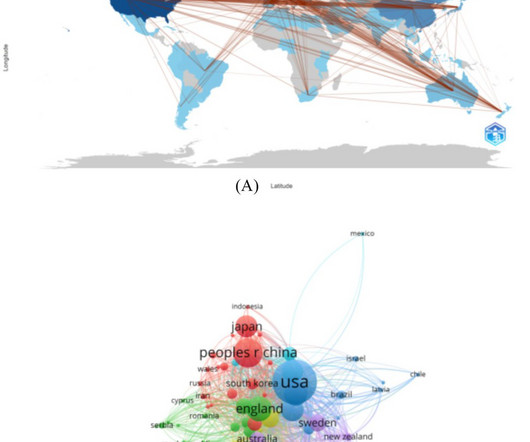
Frontiers in Cardiovascular Medicine
DECEMBER 13, 2024
BackgroundAbdominal aortic aneurysm (AAA) is a localized bulge of the abdominal aorta, which mainly manifests as a pulsatile mass in the abdomen. Once an abdominal aortic aneurysm ruptures, the patient's life is seriously endangered. Surgery is the preferred treatment for abdominal aortic aneurysm.
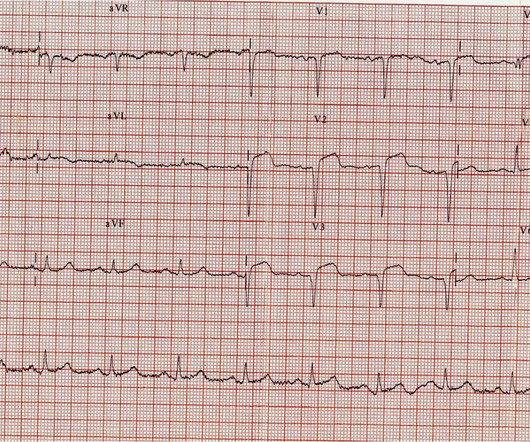
Dr. Smith's ECG Blog
NOVEMBER 17, 2014
There were many comments that it was too late for thrombolytics or that this signified an LV aneurysm, not acute MI. See my formula for differentiating anterior LV aneurysm (that is to say, persistent ST elevation after old MI) from acute anterior STEMI. This is my response: "This is definitely acute or subacute. It is not chronic.

Circulation
MARCH 2, 2025
Circulation, Volume 151, Issue 9 , Page e682-e683, March 4, 2025.

Circulation
MARCH 2, 2025
Circulation, Volume 151, Issue 9 , Page e684-e685, March 4, 2025.

Circulation
DECEMBER 27, 2023
Circulation, Volume 149, Issue 1 , Page 75-76, January 2, 2024.

Circulation
DECEMBER 27, 2023
Circulation, Volume 149, Issue 1 , Page 73-74, January 2, 2024.

Journal of Cardiovascular Pharmacology
MARCH 18, 2025
Thoracic aortic aneurysm (TAA) is a life-threatening condition that currently lacks an effective therapeutic strategy. In the mouse TAA model, TMAO exacerbates aortic dilation and degeneration, promoting the development of thoracic aortic aneurysm. Furthermore, TMAO was observed to impair murine cardiac function.

Dr. Smith's ECG Blog
JANUARY 27, 2024
Smith : Old inferior MI with persistent ST Elevation ("inferior aneurysm") has well-formed Q-waves. In inferior aneurysm, we usually see QR-waves, whereas for anterior aneurysm, we see QS-waves (no R- or r-wave at all!). The patient had a history of ‘NSTEMI’ a decade prior, with an RCA stent.

American College of Cardiology
AUGUST 19, 2024
Does incorporating polygenic risk into a clinical model improve estimation of ascending aortic diameter and the ascertainment of aneurysm as well as thoracic aortic dissection beyond clinical factors alone?

American College of Cardiology
JULY 23, 2024
What are the aortic-related mortality (ARM) and the risk of aortic aneurysm (AA) rupture after fenestrated-branched endovascular aortic repair (FB-EVAR) for the treatment of thoracoabdominal aortic aneurysm (TAAA)?
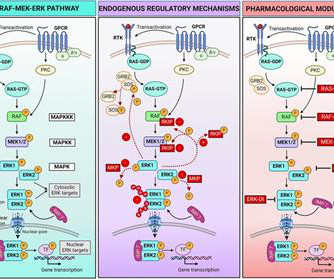
Frontiers in Cardiovascular Medicine
JUNE 30, 2024
In this article, we first describe how ERK signaling contributes to preserving cardiovascular health. We then summarize current knowledge of the roles played by ERK in the development and progression of cardiac and vascular disorders, including atherosclerosis, myocardial infarction, cardiac hypertrophy, heart failure, and aortic aneurysm.

American College of Cardiology
JUNE 11, 2024
In this interview, Hector I. Michelena, MD, FACC and W. Douglas Weaver MD, MACC discuss the history of and complications associated with bicuspid valvuloaortopathy.

American College of Cardiology
OCTOBER 15, 2024
What is the difference in incidence and repair of abdominal aortic aneurysms (AAAs) between countries with different screening practices?

American College of Cardiology
JULY 31, 2024
Eagle looks at a prospective multicenter cohort study that examined early and late aortic-related mortality and rupture after fenestrated-branched endovascular aortic repair of thoracoabdominal aortic aneurysms.
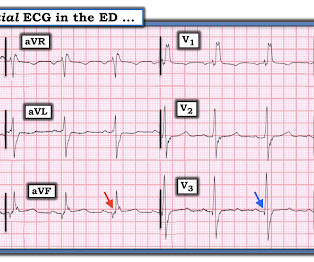
Dr. Smith's ECG Blog
JANUARY 31, 2020
Although diagnostic of MI, it is highly suspicious for " Old inferior MI with persistent ST Elevation" or "inferior aneurysm morphology" because of the well-formed Q-waves and the flat T-waves. To repeat: in contrast, anterior aneurysm is much more easily distinguished from acute MI due to the QS-waves.

Stroke Journal
FEBRUARY 1, 2024
Review articles and meta-analyses were excluded. Optimization of LLM prompts may help with specificity, and weighting articles by type or perceived quality may improve accuracy. Here we use GPT3.5, Here we use GPT3.5, Using custom code via the GPT3.5 Results:Mean efficacy scores for N, M, and IH were 0.67, 0.32, and 0.15

Stroke Journal
JANUARY 30, 2025
Articles evaluating risk of acute ischemic stroke (AIS) and/or intracranial hemorrhage (ICH) in patients with IE were included. Meta-analysis was feasible for only some predictive factors due to study heterogeneity.

Dr. Smith's ECG Blog
JANUARY 9, 2024
These are all findings that can be expected with left ventricular aneurysm. Many advances in treatment have occurred in the 28 years since this article was published. That said — misdiagnosis of WCT rhythms for the same reasons cited by the authors remains all-too-common — so the lessons put forth in this 1995 article remain relevant.
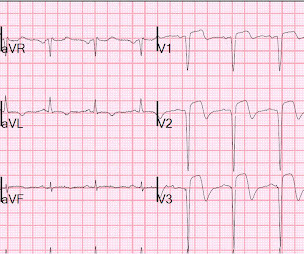
Dr. Smith's ECG Blog
OCTOBER 26, 2011
Persistent ST elevation 3 days after a nearly transmural MI portends possible LV aneurysm. It is very unlikely to be LV aneurysm morphology when the ST elevation is so high and the T-Wave inversion is so deep. Echo at this time showed some improvement in EF to 40%, but persistent akinesis and thrombus. Cath showed a 95% LAD with flow.

Dr. Smith's ECG Blog
SEPTEMBER 27, 2019
Once dissecting aneurysm was ruled out by chest aorta CT — the possibility of acute ischemic heart disease becomes paramount. B ONUS — The 3 page article by Rowlands and Moore that I’ve posted in Figures-2 , 3 and 4 below is the BEST description I’ve seen of how to quickly determine which extremity is the source of the A rtifact ).
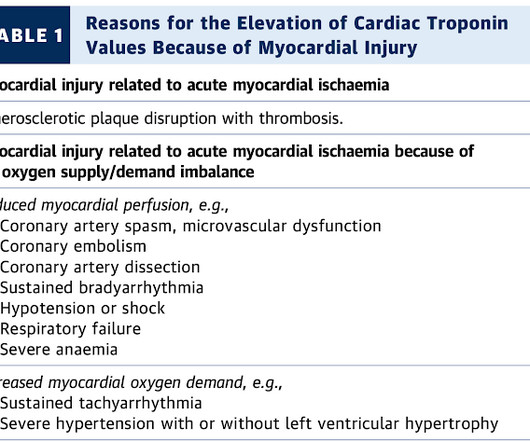
Dr. Smith's ECG Blog
MAY 19, 2020
The patient's heart had significant recovery: Echo : Estimated LVEF 32%, apical wall motion abnormality with diastolic distortion (LV aneurysm), suggestive of old MI. A followup ECG was recorded 2 days later: No definite evidence of infarction. It was uncertain whether this represented: 1. A list of conditions that can cause this is below.

Dr. Smith's ECG Blog
DECEMBER 18, 2022
If you still have not read it, I strongly recommend that you read the following article on the diagnosis of "posterior" MI: Ischemic ST-Segment Depression Maximal in V1-V4 (Versus V5-V6) of Any Amplitude Is Specific for Occlusion Myocardial Infarction (Versus Nonocclusive Ischemia), by Meyers HP et al. His peak troponin was over 5000 ng/L.

Journal of Cardiovascular Pharmacology
APRIL 8, 2024
Aneurysms are localized dilations of blood vessels, which can expand to 50% of the original diameter. The pathophysiology of aneurysms is complex and diverse, often associated with progressive vessel wall dysfunction resulting from vascular smooth muscle cell (VSMC) death and abnormal extracellular matrix synthesis and degradation.

American College of Cardiology
OCTOBER 2, 2024
In this week’s View, Dr. Eagle looks at sex-specific differences in alive hospital discharge following abdominal aortic aneurysm (AAA) repair.

Dr. Paddy Barrett
JUNE 14, 2024
The cause of this arterial rupture was very likely an aneurysm that had grown over time and ruptured. These aneurysms are rare. It was a rare pancreatic aneurysm that nearly killed him at age 58 while sitting in a cabin with his wife in upstate New York. He survived. By the skin of his teeth. But Here’s The Thing.

American College of Cardiology
SEPTEMBER 30, 2024
What are the sex-specific differences and drivers of the rate of alive hospital discharge following infrarenal abdominal aortic aneurysm (AAA) repair?
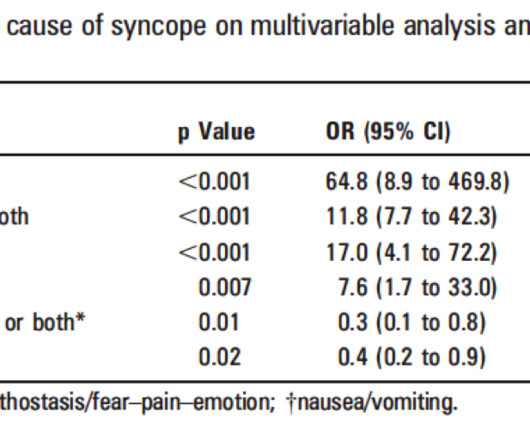
Dr. Smith's ECG Blog
APRIL 8, 2015
Look for Vascular Etiology -- think of these while doing H and P: --Bleeding: ruptured AAA, GI bleed, ruptured ectopic pregnancy, other spontaneous bleed such as mesenteric aneurysms. Annotated Bibliography For an excellent overview of ED Syncope management , see this article by Kessler C et al. starts at end of article on p.

European Journal of Heart Failure
NOVEMBER 14, 2023
Significant LGE at CMR; LVEF <50%; abnormal blood pressure response during exercise test; LV apical aneurysm; high-risk genotype. *Syncope, LGE on CMR, inducible sustained VT at PES, pathogenic mutations in LMNA, PLN, FLNC, and RBM20.
Expert insights. Personalized for you.
We have resent the email to
Are you sure you want to cancel your subscriptions?


Let's personalize your content